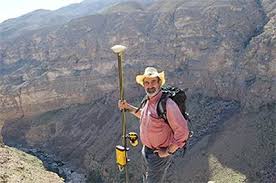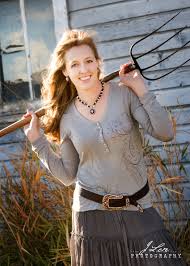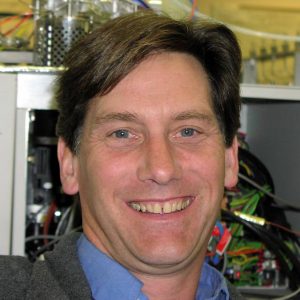Welcome to Radio Ecoshock. We begin with a startling way to reduce carbon in the atmosphere. Dr. Peter Kelemen, of Columbia University reports from his field work in Oman. Then – are you dreaming of moving to the country? We get tips from Jill Winger at her Prairie Homestead in Wyoming. All that, plus a couple of answers for climate doubters, from Professor Jim White – in this week’s Radio Ecoshock.
Download or listen to this Radio Ecoshock show in CD Quality (57 MB) or Lo-Fi (14 MB)
PETER KELEMEN – CAN ROCKS DRAW DOWN CO2?
It’s not enough to stop putting fossil emissions into the atmosphere. Somehow, we have to REDUCE the levels of carbon dioxide, currently running around 410 parts per million. When we are finally ready to save ourselves, Peter Kelemen may have part of the solution.
This answer lies in an unlikely place, the Sultanate of Oman. That country is south of Saudi Arabia, and is the eastern neighbor of Yemen. Dr Kelemen has been there many times over the years, as part of the Lamont-Doherty Earth Observatory, at Columbia University. Peter leads an international group of scientists studying a rare and beneficial rock formation that can gulp down CO2 and hold it.
Dr. Peter Kelemen is a Professor of Geochemistry at Columbia University in New York, and Chair of Earth and Environmental Sciences.

I assumed the inner Earth communicated with the Outer Earth. Volcanoes can release molten rock from below, and parts of the sea bed falls back down. But there is a large layer which has never come in contact with our atmosphere. It’s called the Mantle, which is below the Earth’s crust.
Bits of the Mantle have been thrust up to the surface in some geological incidents, in many places around the world. But one of the largest deposits, relatively young in geologic time, is found in Oman, the Sultanate that is south of Saudi Arabia, and east of Yemen. Dr. Kelemen leads an international team of scientists who have been to those rocks in Oman many times.
These rocks, known as “peridotite“, capture carbon from the air, leading to whitish deposits that run like marble through the rock. Right now they are only capturing tons of carbon, whereas we are emitting billions of tons annually. But the Kelemen team suggests there is a process to speed up this carbon capture by a million times. It involves pumping pure CO2 (say from nearby oil facilities in Oman) into the rock. Yes, it’s a type of “geoengineering”.
Oman is ideal for a large-scale carbon capture into the rocks. It gets very little rain, which helps, and it’s hot there all year round, which also speeds the process. Once that carbon goes into the rocks, it’s more or less permanently stored.
Oman produces lots of oil, and burns oil for all electricity, air-conditioning and more. The country of Oman considered using this process to make their nation carbon neutral, but have since shied away. They may fear becoming the world’s “carbon dump”. It seems to be an identify problem?
But when the world is ready, Kelemen says, it’s conceivable that the rocks of Oman could capture up to ten percent or our current emissions. Or, if we greatly reduce emissions, this area may become part of the process of lowering CO2 levels in the atmosphere, to prevent a total melt-down of the poles, and climate catastrophe.
You can get a better understanding of all this from this Columbia University blog. There’s a video on that page where you can see the rocks in Oman.
WHY IS THE CRUST UNDER THE OCEAN THINNER THAN UNDER THE CONTINENTS?
Along the way, we discuss why Earth’s crust is shallower under the oceans than it is on land. The answer is due to scientific knowledge that only came to light in the 1950’s, and has not yet really penetrated public awareness. In a nutshell, my understanding (limited as a non-scientist) is that the ocean crust is not fixed. Instead it is continually being created by a ridge of volcanoes that run around the world near the Equator. New crust “flows” or oozes away from this ridge, and as it does, other parts of the ocean floor collapse down into the molter layer below. The crust under the ocean is always being created. Who knew?
Essentially in this interview, We’ve been getting an update about work published in the Proceedings of the National Academy of Sciences in 2008, titled “In situ carbonation of peridotite for CO2 storage“.
Download or listen to this 24 minute interview with Dr. Peter Kelemen in CD Quality or Lo-Fi
JILL WINGER FROM “THE PRAIRIE HOMESTEAD”
There’s out there. And then there’s homesteading way out there, like Jill Winger and her family in Wyoming. They call themselves “the Prairie Homestead“. I’ve been getting Jill’s free Homestead Toolbox newsletter for about a year now. After a bunch of useful tips, and honest writing about what works and what doesn’t – I think it’s time we meet her.

One of the reasons I like Jill’s blog, and why I called her: she has the honesty to admit when it’s hard, or when things fail. For example, I don’t like weeding, I like to feed my soil, so I mulch my garden heavily. But I wasn’t watching for a serious problem Jill warned us all about in a heart-breaking blog titled “I think I poisoned my garden“.
She followed the idea of heavy mulch first promoted in the 1970’s by Ruth Stout. What Jill didn’t know was that her mulching hay or straw had been grown with a herbicide which favors monocots (the whole grass family) and kills dicots (most garden plants). That herbicide can stay on the plants, so it can harm your garden. One of the signs is curled tomato leaves, but read Jills’ blog for more.
Jill says the herbicides can even go straight through farm animals, so manure can also be contaminated. Check your sources of mulch to make sure they are not laden with chemicals!
Jill Winger also wrote “I’m teaching my kids to fail“. That sounds counter-intuitive. She explains in this interview.
Listen to or download this 23 minute interview with Jill Winger in CD Quality or Lo-Fi
Speaking of kids, it’s hard to realize they may not choose the same lifestyle when they get older. It’s so true. My own daughter spent her youngest years on our big homestead. Later she lived in the city, but more recently moved back to a small town and back to raising food, permaculture and all that. We don’t know how much sticks with our kids, but it maybe a lot. Jill wrote about her thoughts for her own daughter in this blog entry.
I think there may be an arc of age when it comes to homesteading. Once a homestead is set up and operating, some people manage to stay there well into their old age. But to set one up, as Jill and her husband did, really needs younger people, I think. Older people thinking of retiring into the country, as my wife and I did, we need to rethink what we will be able to do and keep up. Homesteading for seniors may be the new frontier.
Figuring out how to survive financially is also key. Both Jill and her husband worked in a nearby town in the first years when they took over their rundown farm house and outbuildings. Find photos and the story of their Prairie house here.
Slowly Jill built a business out of her homesteading tips, and then a real living selling “essential oils“.
ESSENTIAL OILS
Jill says essential oils are distilled plants. It takes a lot of plant material to gather a small amount of the volatile oils that can be collected. Not all plants are suitable for this process. It’s tricky, so Jill doesn’t make them herself, but distributes the products for another company. These oils have many medicinal uses for humans, farm animals and pets. There are many other ways to use them, including discouraging pests in a garden.
I like Jill’s tips on chickens and chicken coops. Even some vegetarians realize it’s good to get protein from chicken eggs. But can we really have chickens without buying big bags of feed from some industrial supplier? “Yes and no” says Jill, as she describes what they can provide on the homestead, and what they still buy out.
You can find out more at theprairiehomestead.com. Their Homestead Toolbox newsletter is free, useful, and doesn’t overload my inbox. You can sign up at their site.
ANSWERING CLIMATE DOUBTERS: DR. JIM WHITE VIA TUC RADIO
I’m a long-time fan of TUC Radio in San Francisco. It’s Time of Useful Consciousness, presented by Maria Gilardin. We just have time for an excerpt from her program featuring Dr. Jim White, and three of his answers for climate doubters.

Dr. Jim White
Maria writes:
“When the Weather and Climate Summit was established in 1985 the goal was to bring together weather-casters and meteorologists from the U.S. and Canada with scientists and researchers. Their annual summit of 2017 was held in Breckenridge, Colorado, from January 8 to 12. One of the many topics at the summit was to prepare for the incoming Trump administration that was to include outspoken climate change deniers.
Dr. Jim White teaches at the University of Colorado. He specializes in Global change, paleoclimate dynamics, and the human impact on climate.”
I’m Alex Smith. Please join me again next time, for Radio Ecoshock. And please support my work financially if you can. I don’t’ make anything from the radio programs, and give them away for free to people all over the world. Only your support keeps me going.
Hello Alex,
I`am a following your programm since a year and just wanted to tell you how much I enjoy your work.Keep on going! Greets out of Germany